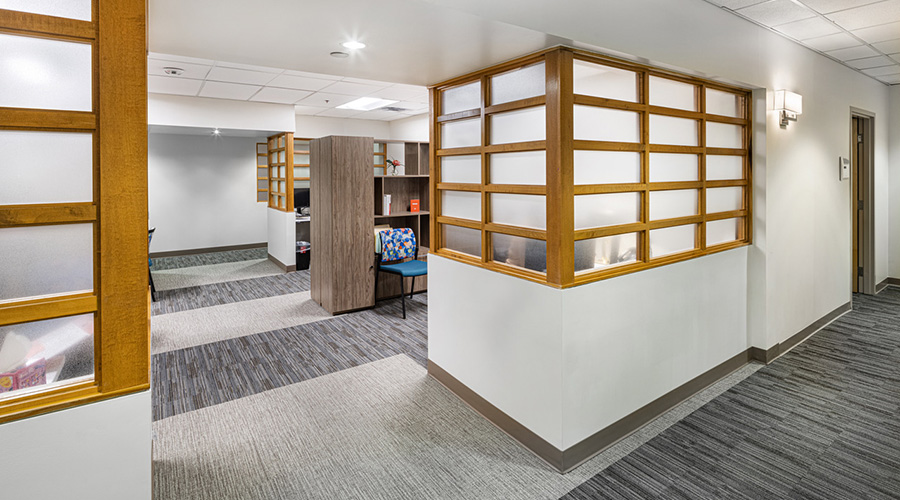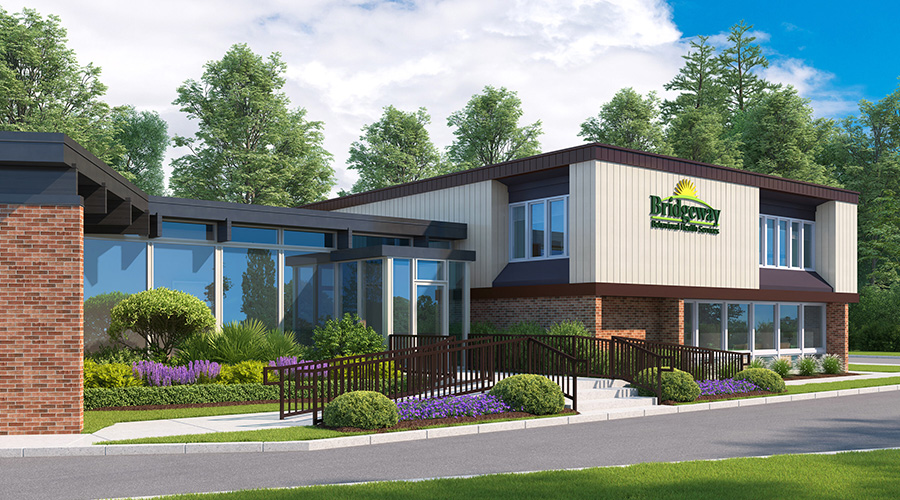Healthcare renovations are complex. Unlike typical construction projects, these efforts must balance evolving care delivery models, stringent healthcare compliance standards and the logistical challenges of working within active, fully operational clinical environments.
These projects require careful planning, multidisciplinary coordination and a deep understanding of the way healthcare spaces function under real-time demands. As the needs of healthcare systems evolve, renovation projects must become increasingly adaptable, resilient and informed by long-term strategy.
Goals and priorities
The first step in any complex healthcare renovation project is understanding the healthcare organization’s goals. Whether the catalyst for the renovation is upgrading specific equipment, such as infant security systems or undertaking a larger-scale transformation of operational workflows, these objectives guide the entire approach.
One hospital might need to reconfigure a nurses’ station to improve patient visibility and reduce response times, while another might prioritize private recovery rooms to align with new post-surgical protocols. Before drawing a single line on paper, it is critical for designers to collaborate closely with healthcare facilities managers to fully understand their vision, goals and budget.
Once project priorities are clearly defined, the next step is to assess whether the existing space should be repurposed, modestly renovated or entirely reimagined. This decision depends on the original design, current conditions and most importantly, how the space is expected to function in the future.
For example, imagine an underused administrative wing that a client hopes to convert into a behavioral health unit. At first glance, this might seem like a straightforward repurposing, but behavioral healthcare spaces require specific design interventions related to safety, visibility and patient flow. Designers need to present these challenges to managers early in the process and together decide whether strategic upgrades will be sufficient or if a broader reconfiguration is necessary. These conversations also involve working closely with consultants, code experts and the in-house operational team to ensure the space meets modern healthcare standards while supporting staff and patient needs.
Managing unknowns
Even with clear goals and a defined scope, healthcare renovations often involve navigating unknowns, especially when working in older or underutilized spaces, which can present unique challenges. One major factor contributing to these challenges is incomplete or outdated documentation, which makes it difficult to fully assess the scope of work. In these cases, on-site verification is essential to identify existing conditions and figure out a plan moving forward.
Another common hurdle is structural limitations. Many healthcare facilities were originally designed to meet different codes and standards, and incorporating modern requirements, such as those from the Facilities Guidelines Institute, can significantly expand the project scope. For example, converting an existing room into an MRI suite might seem straightforward, but the reality often involves major structural reinforcement, upgraded HVAC systems to manage thermal loads and specialized shielding to ensure safety and compliance.
These kinds of interventions, driven by evolving technology and regulatory demands, frequently require substantial systems upgrades that can quickly escalate the scale and complexity of a renovation.
To mitigate surprises, it is vital to partner with experienced project teams who conduct early explorations and prepare for unexpected findings. Such teams understand that unforeseen issues are inevitable and become skilled at anticipating risks through early investigations based on building types and known challenges.
Coordinating construction
Once foundational assessments are complete, the focus shifts to coordinating renovations within active healthcare settings. Facilities managers, as well as clinical staff and department heads, must plan and collaborate closely with designers to reduce risk, ensure patient care is not disrupted, and keep the workflow running smoothly. The way this coordination takes shape depends on the type and complexity of the renovation.
For more systems-based upgrades, it is important to define when and how access can be granted to evaluate existing conditions. This process might involve coordinating third-party testing, conducting off-hours assessments and working around clinical schedules. For instance, installing a new fire alarm system in a 24/7 emergency department required inspections during overnight lulls and close coordination with security and facilities teams to ensure patient care remained uninterrupted.
These logistical efforts are crucial for balancing technical upgrades with the realities of continuous clinical operations. In contrast, larger-scale renovations, particularly those involving shutdowns, require more complex coordination. Because many hospital systems are interconnected, shutting down one area can unintentionally affect others. To minimize disruption, managers need to share the facility’s shutdown protocols early with designers and provide ample lead time, especially if the work could impact high-acuity areas, such as emergency departments or intensive care units.
This understanding allows teams to develop test scenarios that maintain operations and support staff during construction. Renovations often proceed one room at a time over an extended period to ensure continuous patient care. Successfully navigating phased construction requires a thorough understanding of the facility’s operational limits, early risk identification, and transparent communication to align all stakeholders’ expectations.
Complexity into opportunity
Successfully executing a healthcare renovation calls for a strategic, coordinated approach that accounts for operational continuity, infrastructure constraints and long-term flexibility. Early input from engineering consultants and operations staff is key in determining how far existing systems can be pushed and where reinvestment is needed. As patient needs, facilities and medical technologies and regulatory frameworks evolve, healthcare renovations must be designed with current use and future adaptability in mind.
Renovations are an opportunity to future-proof infrastructure by evaluating whether systems can support emerging technologies and care models. By aligning stakeholders early on, anticipating unknowns and prioritizing clear communication, renovation teams can navigate complexity while minimizing disruption to care. Doing so helps healthcare facilities remain responsive, resilient and ready for future challenges and opportunities.
Ashlee Washington is principal and healthcare studio co-leader with Ankrom Moisan.

 Joint Commission Standards: What Updates Matter Most?
Joint Commission Standards: What Updates Matter Most? Swinerton Completes Construction at Atlanta's Grady Hospital
Swinerton Completes Construction at Atlanta's Grady Hospital NY Governor Hochul Announces $300M in Funds for IT and Cybersecurity
NY Governor Hochul Announces $300M in Funds for IT and Cybersecurity Healthcare Is the New Retail
Healthcare Is the New Retail Bridgeway Behavioral Health Services Launches Campaign to Renovate Health Center
Bridgeway Behavioral Health Services Launches Campaign to Renovate Health Center